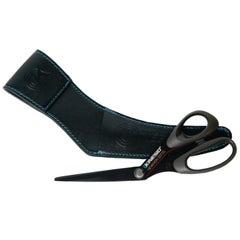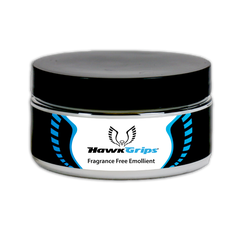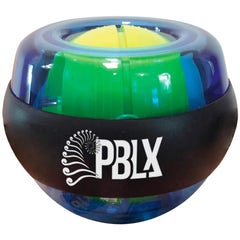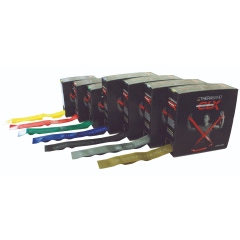About Jamie Roseblum
Why Jamie Chose Hand Therapy
Jamie’s Top 5 Must-Have Items
Performance Health’s Impact
Advice for Someone Going into Hand Therapy
What’s Next for Hand Therapy and Jamie
About Jamie Rosenblum
Our September Clinician of the Month, Jamie Rosenblum, MS, OTR/L, CHT, works at Hands On OT, an upper extremity rehab facility in Santa Monica, California. On occasion, Jamie also consults at Cedars-Sinai Marina del Ray Hospital. She received her bachelor’s from the University of Michigan in Ann Arbor and later went back to school to study occupational therapy at New York University.
At her job, Jamie says she sees patients ranging from 6 years old to 96 years old. Whether it’s arthritis, post-surgical, or CRPS patients, Jamie says she has seen a variety of injuries that need treatment since she started working in hand therapy about eight years ago.
Why Jamie Chose Hand Therapy
When she was in college, Jamie had a rare injury, a mallet thumb, when she broke her hand. While attending hand therapy, Jamie realized she felt as if she wanted to be at the therapy office more than her own marketing job after she finished college. She said the positive environment in the physical therapy office led her to reconsider how her future might look. Jamie went on to study at New York University in New York City, and did field work at Columbia Presbyterian, as well as at NYU’s Center for Musculoskeletal Care.
“I just thought hands were so interesting and intricate and intimate,” Jamie said. “It's a very personal space that you're entering into when you're working on somebody's hands.”
Jamie’s Top 5 Must-Have Items
Performance Health’s Impact
As a hand therapist, Jamie said having the right equipment is key. Luckily for her, Performance Health has all her hand therapy needs.
“I would say we use six different types of equipment in a five-minute session,” Jamie said. “Between the VELCRO®, fit, fleece webbing, and whatever else it might be.”
While we listed her top products earlier in this article, Jamie said there is one item she almost always has on her – the Pocket Finger Goniometer.
“Obviously there's a variety of different goniometers, but this one’s my favorite,” Jamie said with a smile on her face. “I just feel like to measure a thumb or any MCP [Metacarpophalangeal] this is the key."
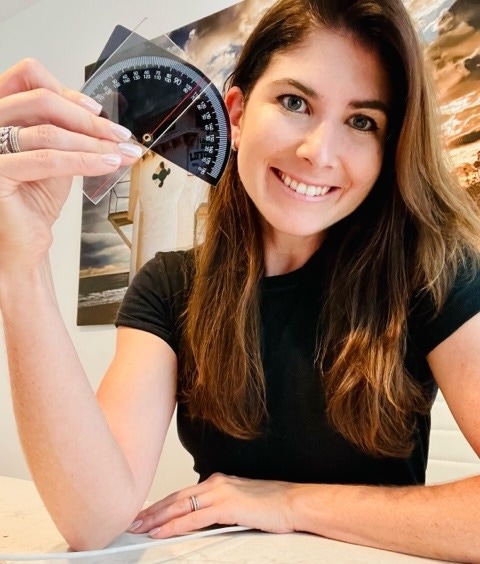
She likes having a more specific goniometer than one that just goes by increments of five. Although the Pocket Finger Goniometer Jamie loves is discontinued, there are similar products available. With the Jamar Flexion/Hyperextension Finger Goniometer, you can get a more precise measurement with a product that’s easy to use.
Jamie also recommends THERABAND® because of its versatility. She especially loves THERABAND CLX®.
“It's like a game changer for hand therapy because I cannot tell you how many years, I was telling people to tie knots at the end of their bands, and that was causing a lot of stress and confusion,” Jamie said. “This just keeps it easy. You can just put your hand and your elbow in.”
While she says it might sound silly to some, the simple ability to have premade loops when using THERABAND CLX makes a big difference.
“You can strength train and work on functional endurance for the entire upper extremity with just one THERABAND,” Jamie said.
Advice For Someone Going into Hand Therapy
What made a large difference for Jamie was volunteering. She says by doing so, you can soak in a lot of knowledge.
“Not just with how someone's implementing treatment, but on the client-therapist relationship,” Jamie said.
She says seeing how the relationship works helps you see what creates a positive experience for a client, even if they are tough ones.
Another piece of advice Jamie has for someone wanting to go into any form of therapy is to always be listening. By doing so, you won’t only learn new information, but will also learn how to engage with clients.
“I'm still listening to my co-therapists and the way that they're handling situations and telling them, like, ‘You just nailed that,’” Jamie said. “It’s a collaborative space and that’s what’s so fun about this job.”
She says if your mindset is to build each other up in the clinic and create a positive environment for people to get better, hand therapy is for you. As a clinician, you should also be able to communicate well.
“You're working with people who are in pain, right? So you have to be able to walk somebody through that process,” Jamie said.
Being able to communicate and understand psychologically what a patient is going through is vital. Jamie says if you can do this, then it allows the patient to know they’re in hands capable and trustworthy enough to help them work through their trauma.
“It has a learning curve, it takes a long time to get good at it,” she said.
She also says being a hand therapist takes time. You might not feel confident the first time you make a splint, but eventually you will get there. Trust the process.
What’s Next for Hand Therapy and Jamie
A change Jamie has seen over the past few years is a focus on pain medicine, rather than going straight to surgical intervention. For rehabilitation, she says it has been moving to a strategy of finding out what the core of the problem is, and then if there’s any way to help the patient before leaping into surgery. Jamie says looking into the chronic pain cycle and seeing where there are ways to stop it is important, as well as helping patients see their pain is being acknowledged.
“You get to know somebody so well when you're looking directly into their face and working on their hands and their body two to three times a week,” Jamie said.
To help her patients even more, Jamie says she’s looking forward to taking a Mulligan™ Concept Course in the fall, which will focus on manual therapy. The course will allow her to walk out of the class and start using what she’s learned right away, which she feels will help further improve her practice.
She’s also looking into studying to receive an ergonomic certification. Especially with the pandemic, Jamie says she has seen more injuries related to repetitive strains. By taking a course, Jamie says she thinks it would help her have more concrete information about injuries, as well as how to help people with their specific needs.
“I would love to be able to offer more actual brands and things for people to purchase to make their workstation more usable,” Jamie said. “We tell people how to align their bodies, but often they get on Amazon and just don’t know where to start.”
By taking the course, she will be able to know more about what could better help patients.
One thing is certain – Jamie will continue to follow her passion of hand therapy by being a lifelong learner and keeping up with whatever new trends or knowledge comes next.
Who will be our next featured clinician? Nominate yourself or someone you know!

1. Click on the link below
2. Answer the questions on the form
3. Submit a photo of yourself
Medical Disclaimer: The information provided on this site, including text, graphics, images and other material are for informational purposes only and are not intended to substitute for professional medical advice, diagnosis or treatment. Always seek the advice of your physician or other healthcare professional with any questions or concerns you may have regarding your condition.








 France
France Australia
Australia
